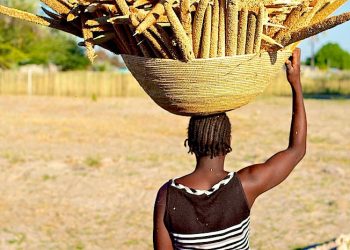
Investor appetite for emerging markets has waned this year, but they still have a taste for South Africa.
Rising US Treasury yields, inflation and the approaching lift-off for Federal Reserve rate hikes have provided reason enough to be cautious about riskier assets. However, South Africa’s contained price pressures, compelling valuations and the boost to commodity prices from Chinese economic stimulus are among factors making it a favored bet.
“South African assets provide an attractive risk premium compared to other emerging markets,” said Mikhail Liluashvili, a cross-asset strategist at Bank of America in London. “The rand benefits from monetary easing in China, which should lift prices of key South African exports.”
Stocks on Johannesburg’s benchmark FTSE/JSE Africa All Share Index have gotten off to a blazing start, spurred on by strong prices for commodities. The gauge set an all-time high last week and has returned 7.5% in dollar terms this year, compared with a 1.1% retreat for the MSCI Emerging Markets index.
South African government bonds have already returned 8.9% in dollar terms in 2022, the best performer out of 19 developing-nations tracked by Bloomberg. The average for peers is negative 0.1%.Â
Even accounting for Fed rate hikes, the securities still offer a large margin of safety compared to peers, according to money managers including Citigroup Inc. and Coronation Fund Managers, who hold bullish calls on the debt.
Money markets are pricing in 121 basis points of South African Reserve Bank hikes this year, which implies a 25 basis point increase at each of the Monetary Policy Committee meetings for 2022.
“Both rates and bonds in South Africa offer attractive premiums as the market prices in a very aggressive hiking cycle and installs a significant risk premium into the belly and long end of swap and bond curves,†BofA’s Liluashvili said.
South Africa’s rand is faring better than most emerging-market currencies, even with its status as a proxy – meaning that in risk-off trade, it can be subjected to outsized swings.Â
Half of the 24 developing-nation currencies tracked by Bloomberg have made losses against the dollar year-to-date. The rand is among those to have strengthened, fourth overall with a return of 4.6%.Â
Some of the rand’s resilience is down to expectations of large inflows from a loan South Africa has arranged with the World Bank. Those funds will likely create a surplus of dollar liquidity in the local market.-fin24











